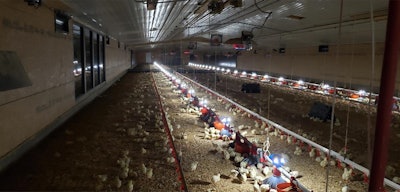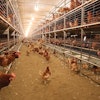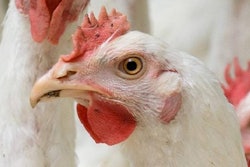
Constant improvement in monitoring technology will power the largest ever gains in animal welfare.
As part of the 2021 Chicken Marketing Summit in Fernandina Beach, Florida, animal welfare experts representing breeding, live production and processing spoke about key issues in the field today. The panelists were:
- Dr. Mark Cooper, managing director of global genetics at Cobb-Vantress.
- Dr. Karen Christensen, senior director of animal wellbeing for Tyson Foods Inc.
- Ken Martin, Fieldale Farms’ broiler production manager.
New technologies
Rapid advancements in machine learning and sensor technology could enable significant improvements in both animal welfare and bird performance.

Cooper said state of the art technology would enable bird identification by gait, posture and how quickly they move. That would allow him to know which bird is eating and drinking and when they are doing it. He could also know how well a bird is walking. If camera and sensors are placed correctly, health issues can be detected, too.
Martin said the promise of precision agriculture powered by connected software and wireless sensor hardware located in the house is enormous. By constantly monitoring environmental conditions and resource consumption, Fieldale can monitor its houses around the clock. Any little thing is magnified, therefore, it can be fixed quicker.
Christensen said technology is exciting because it will eventually power the greatest improvements in animal welfare. She spoke about camera research Tyson is hosting for welfare and bird vocalization. The idea is to correlate the birds’ vocalizations with messages about the birds’ desires or their distresses. This would help growers take immediate intervention.
In the future, cameras will monitor the movement of individual birds and the flock. Hopefully, movement patterns will demonstrate relevant information for animal welfare. Machine learning will assist in quicker identification of individual and collective movement patterns and aid in interpreting their meaning.
“Technology is really going to be the driver to move our ability to meet their needs,” Christensen said.
Natural light
Although it’s a growing trend in the industry, science doesn’t necessarily suggest broilers need access to natural light.

Modern LED lighting technology, she said, paired with greater understanding of the bird’s UV vision could help create an ideal light spectrum and intensity for birds.
Light and behavior
The broiler industry is better understanding the role of light in the birds’ feeding behaviors, too. In nature, Cooper said, the bird is a prey animal, so it wants to eat quickly and hide in the dark to digest its food.
Tyson is looking into placing lights on top of the feed line rather than the ceiling. This creates a gradient of light throughout the house where birds can choose to feed and drink in whichever level of light they are most comfortable.

Voluntary motion inspired by this lighting plan, she said, may benefit bird leg health. Birds are moving on their own rather than being chased around the house. The system is even showing benefits for feed conversion and growth rate compared with standard lighting.
Enrichments
Integrators are adding enrichments to poultry houses to stimulate the birds and encourage natural behaviors.
Martin said birds will engage with anything new and different as chicks but after two weeks the birds don’t pay attention to enrichments.
Moreover, an enrichment must be practical, cleanable and something the grower will use. Hay bales are not practical and concrete blocks are tripping hazards. Both are sanitation challenges and present supply chain difficulties.
A good enrichment, he said, is cleanable and stackable. He said six inch buckets with the bottoms removed are used by Fieldale growers.
Tyson is using platforms, what it calls huts, open boxes and perches as enrichments. Ideally, enrichments would be made of recycled materials, built to last ten years and biosecure.
When considering what the birds want to do, Christensen said, the animals want to get under something and hide because they are prey animals. The birds are hardwired to believe they are exposed and in the open on the litter. This is a reason why covered enrichments – like huts – are useful and why lighting’s role in bird behavior must continue to be investigated.
The role of perches, and other engagements, should be based upon the actual desires the birds present. Broiler birds do not want to perch due to their young age. Martin said perching would also likely create meat quality issues.
Is movement correlated with welfare
Some welfare groups are looking at animal movement as a standard of animal welfare.
Cooper said in rustic lines of birds, its visible that some breeds are more flighty and others are more docile. Over time, breeders selected birds that do not waste their energy running around. Therefore, measuring animal welfare on movement may not make sense because the birds do not necessarily want to move around.
Christensen agreed, saying birds live markedly improved lives based on the industry’s collective achievements in animal welfare. However, the birds are sedentary to maximize protein production.
6 big animal welfare questions answered WATTPoultry.com/articles/39786


















